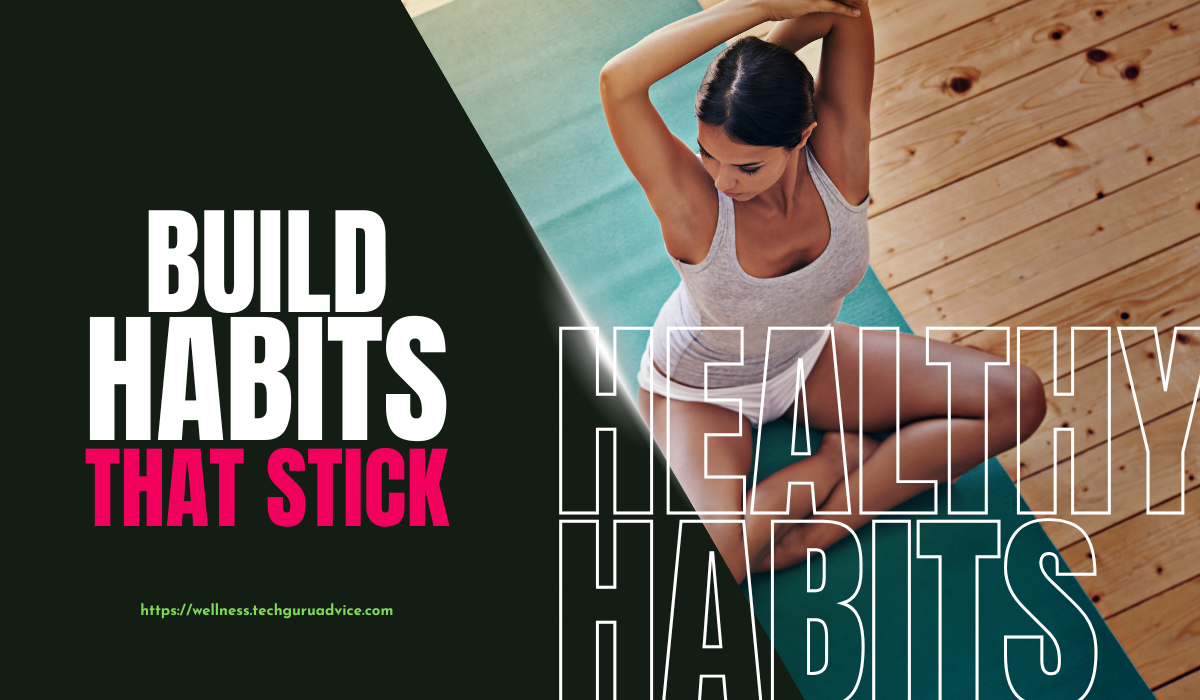
Building habits that stick isn’t about willpower alone—it’s about leveraging proven psychological principles and practical techniques. In this article, you’ll discover how to design your environment, harness neuroscience, and use simple frameworks to build habits that stick for the long term. We’ll cover:
- The four-step habit loop that drives behavior
- Realistic timelines for forming new routines
- Three top frameworks—Atomic Habits, Tiny Habits, and Keystone Habits
- Habit-stacking tactics you can implement today
- Common pitfalls and how to overcome them
- The best habit-tracker apps on the market
- Inspiring real-life success stories
- A handy FAQ section answering your most-searched questions
By the end, you’ll have an actionable plan to turn small actions into automatic routines—and keep them going.
What Is the Habit Loop?
At the core of every routine—whether hitting the snooze button or going for a run—lies the habit loop. Understanding this loop is your first step toward intentional change.

The Four Stages Explained
- Cue (Trigger): The sensory or situational prompt (e.g., your 7:00 AM alarm).
- Craving (Desire): The motivational force—what your brain expects in return.
- Response (Action): The behavior you perform, from a single push-up to checking your phone.
- Reward (Reinforcement): The positive feedback that makes the loop engrain itself.
Neuroscientists estimate that nearly 45% of our daily behaviors occur automatically, driven by habit loops rather than conscious decisions.
By consciously designing each stage—making cues obvious, cravings attractive, actions easy, and rewards satisfying—you set up a cycle that builds habits that stick.
How Long It Really Takes to Build Habits
One of the most common questions is: “How long until this becomes automatic?”
- 66 days on average: A study published in the European Journal of Social Psychology analyzed 96 people forming new habits and found it took, on average, 66 days to reach automaticity, with a range of 18–254 days1.
- Complexity counts: Simpler routines (e.g., drinking a glass of water) solidify faster than complex ones (e.g., 30-minute workouts).
- Individual variability: Personality traits, stress levels, and context can speed up or slow down progress.
Pro tip: Track your streak daily. Visual evidence of progress—whether via an app or a journal—creates its own rewarding loop and helps you stay accountable.
Top 3 Frameworks to Build Habits That Stick
1. Atomic Habits (James Clear)
- Core Idea: Small improvements compound over time—1% gains lead to remarkable results.
- The Four Laws:
- Make it Obvious (clarify your cues)
- Make it Attractive (tie habits to positive emotions)
- Make it Easy (reduce friction)
- Make it Satisfying (celebrate each win)
- Learn more: visit James Clear’s site at https://jamesclear.com.
2. Tiny Habits (BJ Fogg)
- Core Idea: Start so small it feels trivial—then celebrate immediately.
- Three Steps:
- Anchor the new habit to an existing routine (e.g., after brushing teeth).
- Tiny Behavior (perform one push-up).
- Celebrate instantly (smile, say “Yes!”).
- Case in point: One man lost 20 kg by doing just one push-up nightly after brushing his teeth2.
3. Keystone Habits (Charles Duhigg)
- Core Idea: Certain “keystone habits” unlock a domino effect of positive changes.
- Examples: Daily exercise often improves sleep, diet, and stress management.
- Golden Rule of Change: Keep your cue and reward constant, swap out the routine.
Choose the model that resonates most—and customise it. You might combine Atomic Habits’ four laws with Tiny Habits’ celebration element for extra momentum.
Habit Stacking: A Step-by-Step Guide
Habit stacking piggybacks a new behavior onto an established routine, leveraging existing neural pathways.
Formula: “After/Before [Current Habit], I will [New Habit].”
Five Simple Examples
- After I brew my morning coffee → I’ll meditate for two minutes.
- When I sit at my desk → I’ll refill my water bottle.
- After brushing teeth → I’ll do one plank.
- Before checking email → I’ll write one journal sentence.
- After dinner dishes → I’ll take a five-minute walk.
By making your Trigger and Reward clear, you build habits that stick with minimal willpower.
Overcoming Common Pitfalls in Habit Formation
Even with the best intentions, new routines can stall. Here’s how to keep moving:
- Vague Cues
- Fix: Specify exact times or locations (“When my 7 AM alarm goes off…”).
- Weak Rewards
- Fix: Celebrate immediately—use a sticker, a checkmark, or a mini-dance.
- Motivation Dips
- Fix: Scale back on low-energy days (do one exercise instead of ten).
- Environmental Roadblocks
- Fix: Design your space for success—place healthy snacks where you can see them.
- Lack of Accountability
- Fix: Form a habit contract, find a buddy, or post progress in a community.
Research shows nearly 50% of new habits are abandoned within two months, but pre-emptive planning can keep you on track.
Best Habit-Tracking Apps for Building Habits That Stick
| App | Standout Feature | Ideal For |
|---|---|---|
| Habitica | Gamifies tasks with XP & rewards | Game-lovers & accountability |
| Streaks | Simple streak-based tracking | Minimalists |
| Coach.me | Community support & coaching | Goal-driven achievers |
| Loop Habit Tracker | Open-source, highly customisable | Tech-savvy planners |
| Streaks Workout | Quick, app-only micro-workouts | Busy professionals |
Feature Checklist: reminders, data visuals, social sharing, gamification.
See expert ratings at https://www.pcmag.com.
Real-Life Success Stories
BJ Fogg’s Push-Up Experiment
- Routine: One push-up after tooth-brushing.
- Result: Evolved into ten-minute workouts and a 20 kg weight loss over six months.
Ron Gutman’s “Stoke-Stage-Stack” Method
- Stoke: Build excitement (play an upbeat song).
- Stage: Prepare gear the night before.
- Stack: Link to morning coffee.
- Outcome: 365+ consecutive days of running.
Google’s Peer-Feedback Habit
- Cue: Weekly calendar reminder.
- Response: Fill out a two-question form.
- Reward: Public kudos in a team channel.
- Impact: Doubled feedback frequency in three months.
These examples prove that tiny, consistent actions lead to transformative results.
FAQs: Building Habits That Stick
Q1: How long does it really take to form a habit?
On average 66 days, but range varies from 18–254 days based on complexity1.
Q2: What’s the best way to track new habits?
Choose a simple app or paper journal you’ll actually use—consistency beats complexity.
Q3: Can I change an old habit?
Yes—keep the cue and reward, swap the routine (see Charles Duhigg’s Golden Rule).
Q4: How do I stay motivated when progress stalls?
Have “backup” micro-habits, use accountability partners, and celebrate even the smallest wins.
Conclusion & 5-Step Action Plan
You now have a complete roadmap to build habits that stick:
- Define Your Habit Loop: Pinpoint your cue, craving, response, and reward.
- Set Realistic Expectations: Aim for daily progress over a fixed timeline.
- Choose Your Framework: Atomic Habits, Tiny Habits, or Keystone Habits.
- Stack Smartly: Attach new behaviors to existing routines.
- Track & Adjust: Use an app or journal and refine as you go.
Your Next Move: Today, pick one micro-habit—write it down, link it to a clear cue, and commit to it tomorrow. Share your first streak in the comments or on social with #HabitsThatStick.
By following these science-backed strategies, you’ll transform small actions into automatic routines—and unlock lasting change.
Footnotes
- Phillippa Lally et al., “How are habits formed: Modelling habit formation in the real world,” European Journal of Social Psychology, 2009. ↩ ↩2
- BJ Fogg, Tiny Habits, 2020. ↩
🚨 Your wellness journey is one click away – Don’t miss out!
👉 Explore Here





